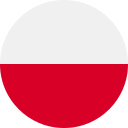to make animals produce offspring in a way that is suitable for human beings

hodować, rozmnażać
all wild animals, considered as a whole, living in the natural environment

dzika przyroda, fauna
(of an animal, plant, etc.) being at risk of extinction

zagrożony wyginięciem
any of the light and soft parts covering the body of a bird

pióro, puch
the thick, soft hair that grows on the body of some animals such as cats, dogs, etc.

futro, sierść
a tropical bird with bright colors and a curved beak that can be trained to mimic human speech

papuga, papużka
an animal's foot that typically has a combination of nails, claws, fur, and pads

łapa, stopa
a large white bear which lives in the North Pole and is well-adapted to its icy environment

niedźwiedź polarny, biały niedźwiedź
a group that animals, plants, etc. of the same type which are capable of producing healthy offspring with each other are divided into

gatunek, gatunki
the part of the body of an animal, a bird or a fish that sticks out at the back, which can move

ogon, ogon zwierzęcia
the protection of the natural environment and resources from wasteful human activities

ochrona, zachowanie
a dormant state in animals, characterized by lowered body temperature and metabolic activity, often during winter to conserve energy

hibernacja, sen zimowy
to keep something from change or harm

zachowywać, chronić
a male bird with a large shiny colorful tail having eyelike patterns that can be raised for display

paw
| Cambridge English: FCE (B2 First) |
|---|
